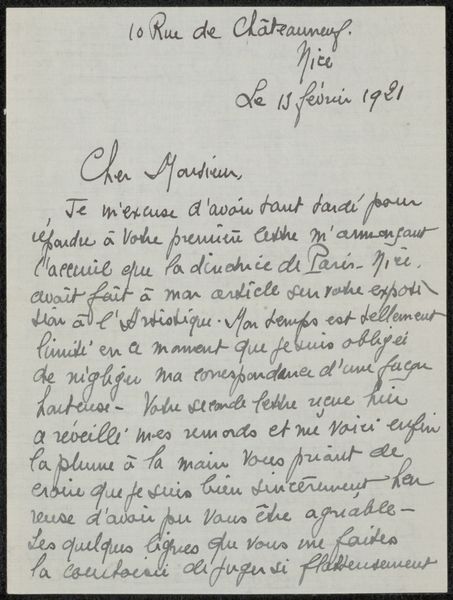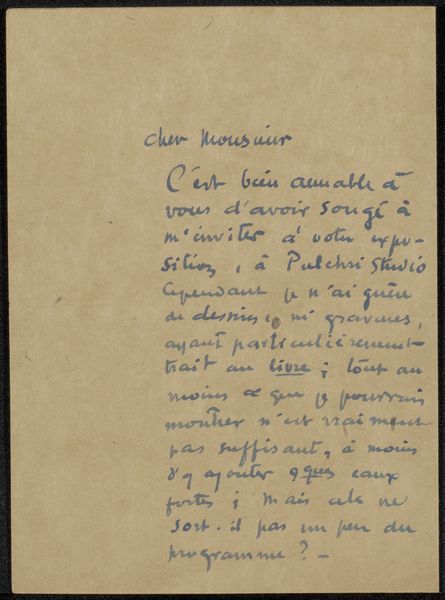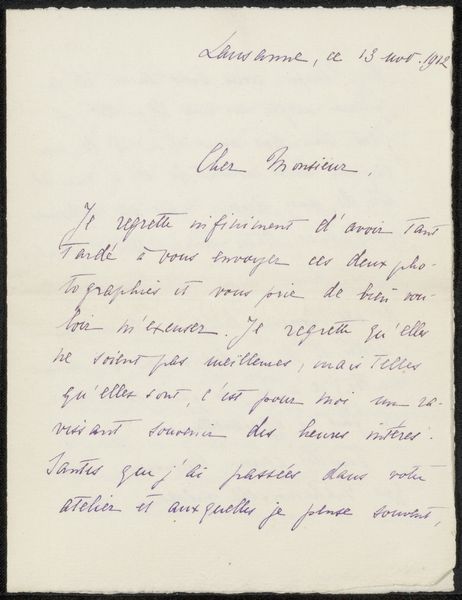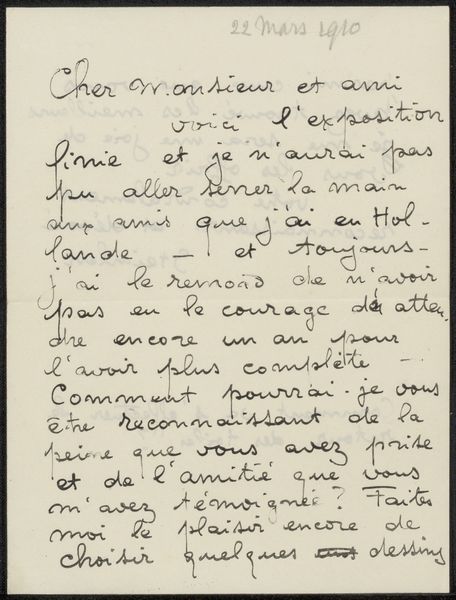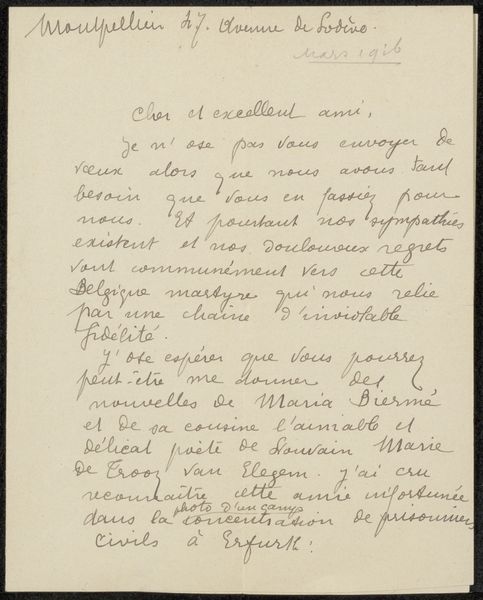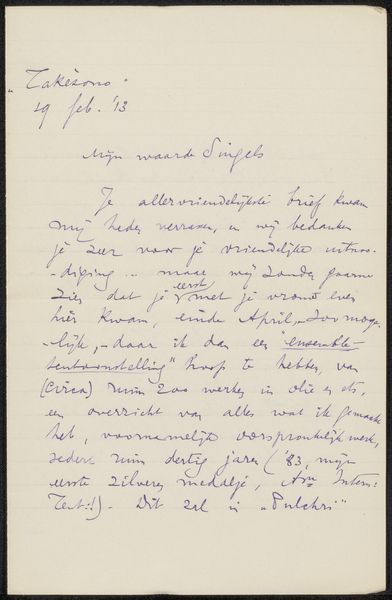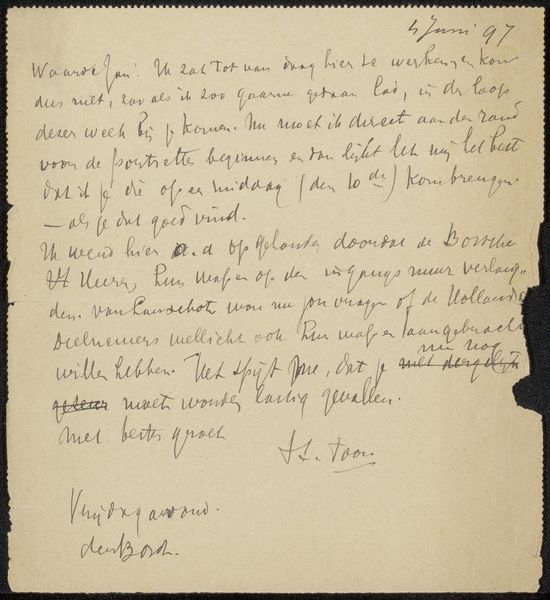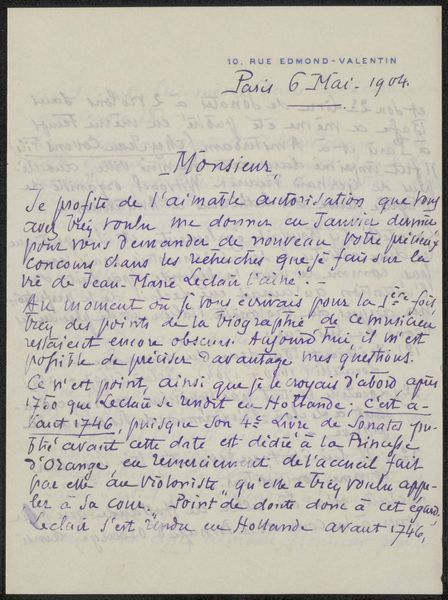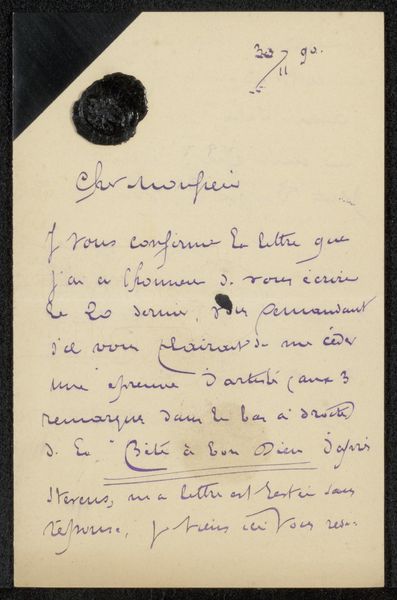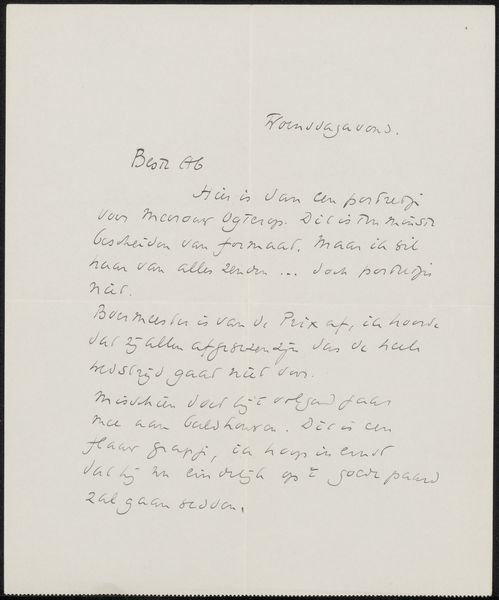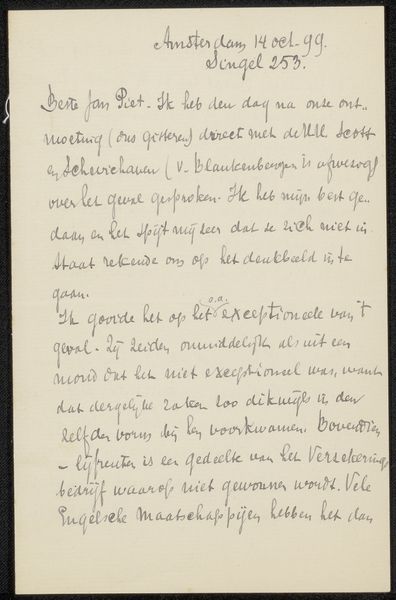
drawing, mixed-media, paper, ink, pen
#
drawing
#
mixed-media
#
ink paper printed
#
paper
#
ink
#
pen
Copyright: Rijks Museum: Open Domain
Editor: This is a letter titled "Brief aan Philip Zilcken," possibly from 1904, by Lionel de la Laurencie. It seems to be created with a mix of ink, pen, and maybe printed elements on paper. There's a handwritten quality to the French text that feels intimate, even though it is addressed formally to "Monsieur". I'm struck by how ordinary it appears – a simple letter, but what stories might it tell? How do you interpret its significance as a historical document? Curator: Precisely! It's tempting to dismiss something like this as ephemera, but consider its potential. This isn’t just a private correspondence, but a potential glimpse into the art world of the early 20th century. Zilcken was a known artist and art critic, wasn’t he? So, who was de la Laurencie, and what was their relationship? The content might illuminate aspects of artistic circles, patronage, or even the art market at the time. We can learn so much about social and professional networks by analyzing letters such as this, like uncovering evidence about who supported whom. Editor: Ah, so you see the recipient as a key to unlocking its historical meaning. I hadn’t considered Zilcken's position as an entry point. The reference to the artist possibly passing “unaperçus dans…", nearly unnoticed suggests commentary on the recognition, or lack thereof, afforded to artists at the time. Is that a plausible reading? Curator: Indeed, or perhaps about the changing tastes of the art market, or a very personal assessment of someone's creative production. Such insights are vital for understanding how artistic reputations are constructed and sustained, or lost to the sands of time. Remember that institutions and cultural gatekeepers heavily shape what becomes visible and valuable. And also…think about its potential public role now. How can this simple correspondence challenge current institutional frameworks? Editor: That is thought provoking. Looking at art in context gives it new value. I initially saw this letter as simply correspondence, but with context, it's a rich artifact about networks and critical assessment! Curator: Exactly. Every element of its visual design is a considered argument to something that preceded it, and points to everything that would follow.
Comments
No comments
Be the first to comment and join the conversation on the ultimate creative platform.
